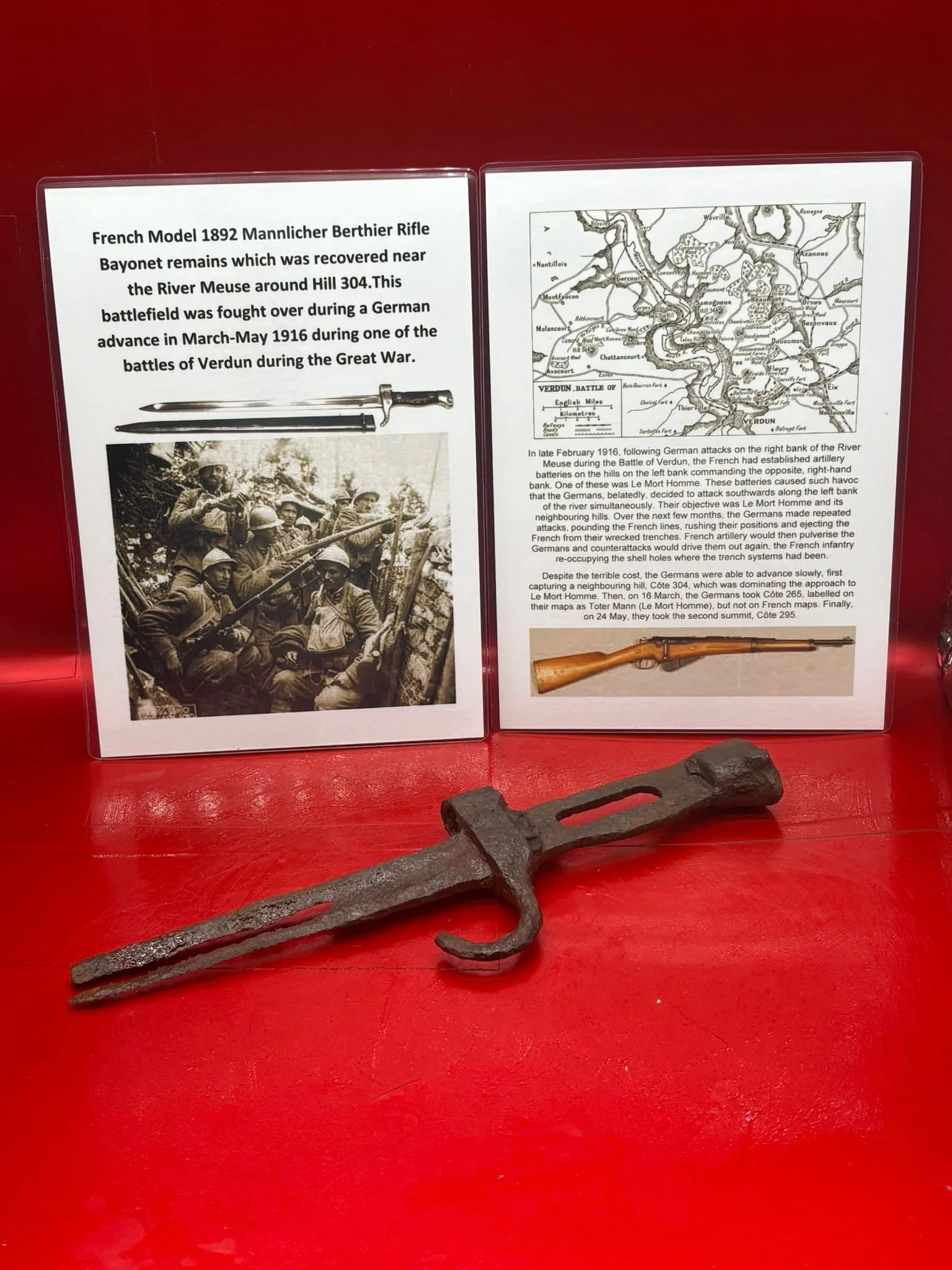 Image 1 of 8
Image 1 of 8

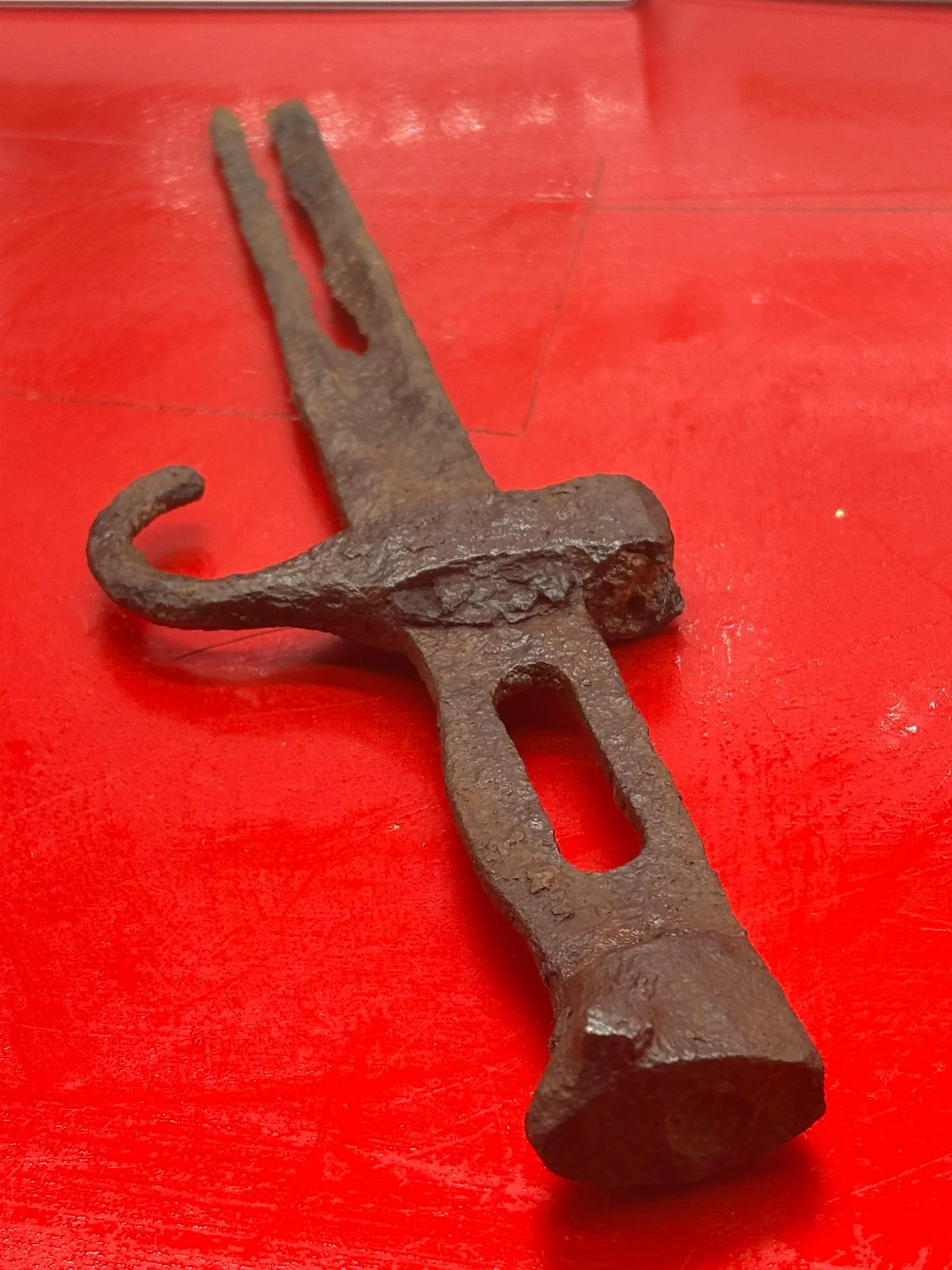 Image 2 of 8
Image 2 of 8

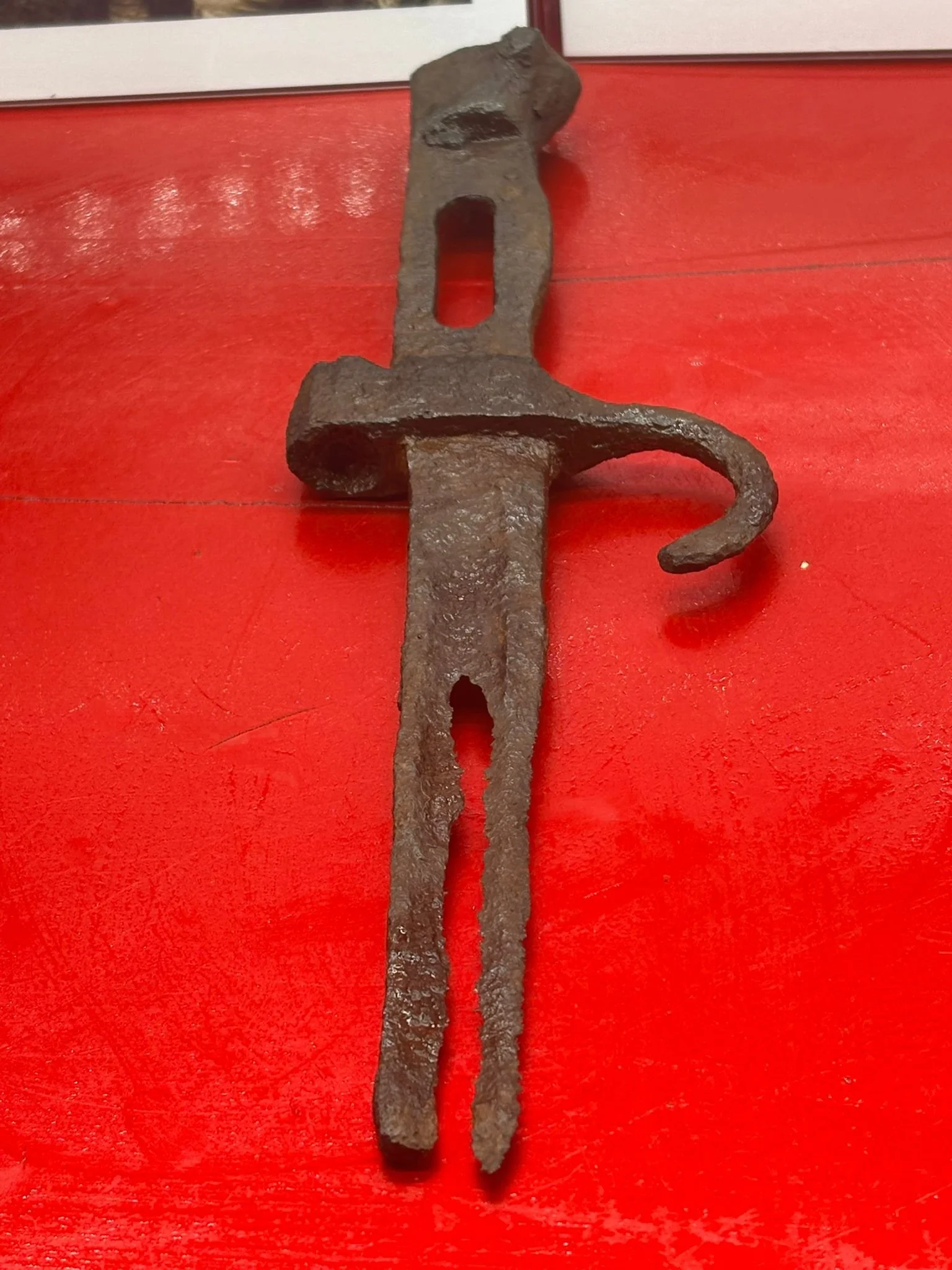 Image 3 of 8
Image 3 of 8

 Image 4 of 8
Image 4 of 8

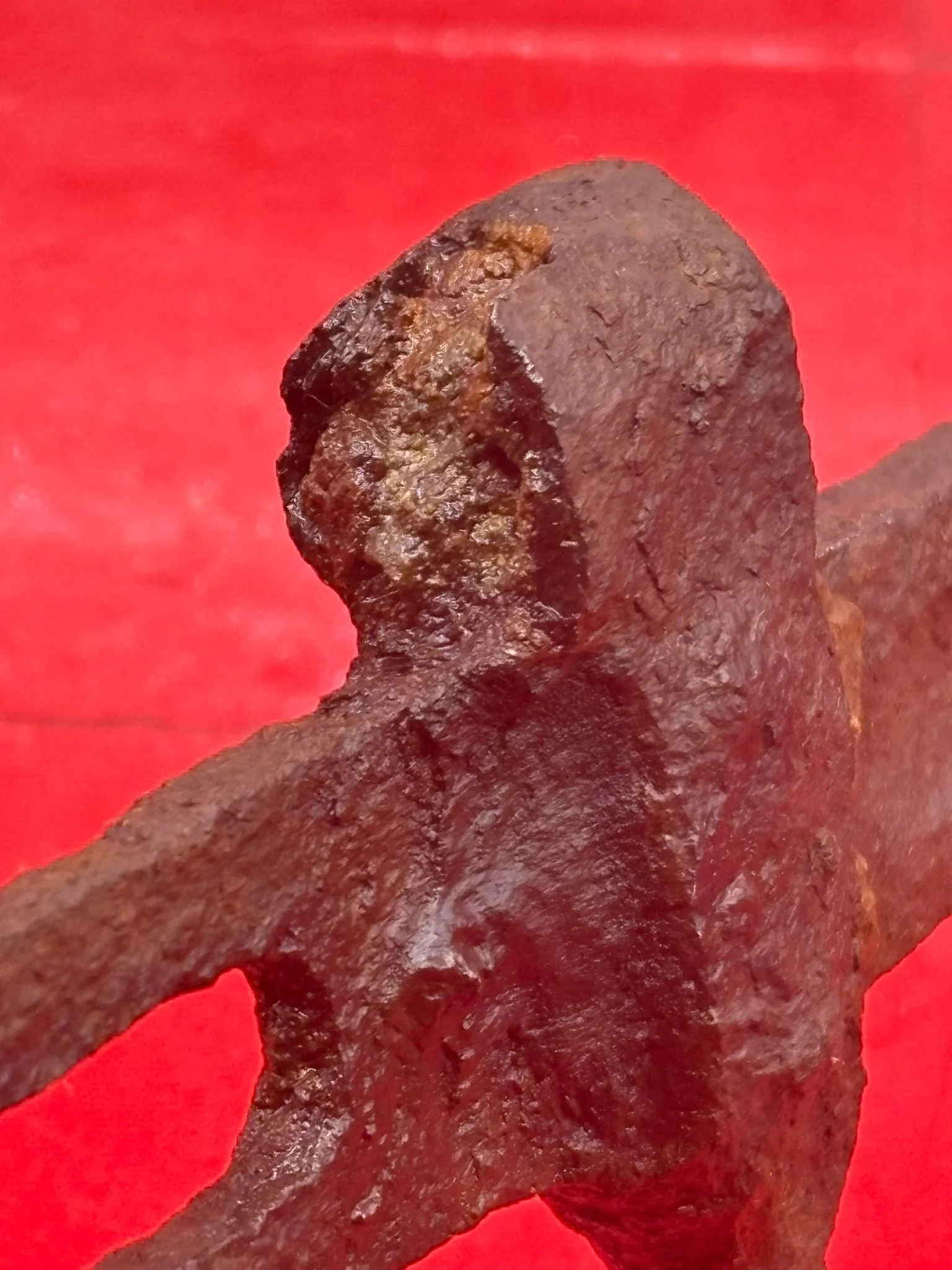 Image 5 of 8
Image 5 of 8

 Image 6 of 8
Image 6 of 8

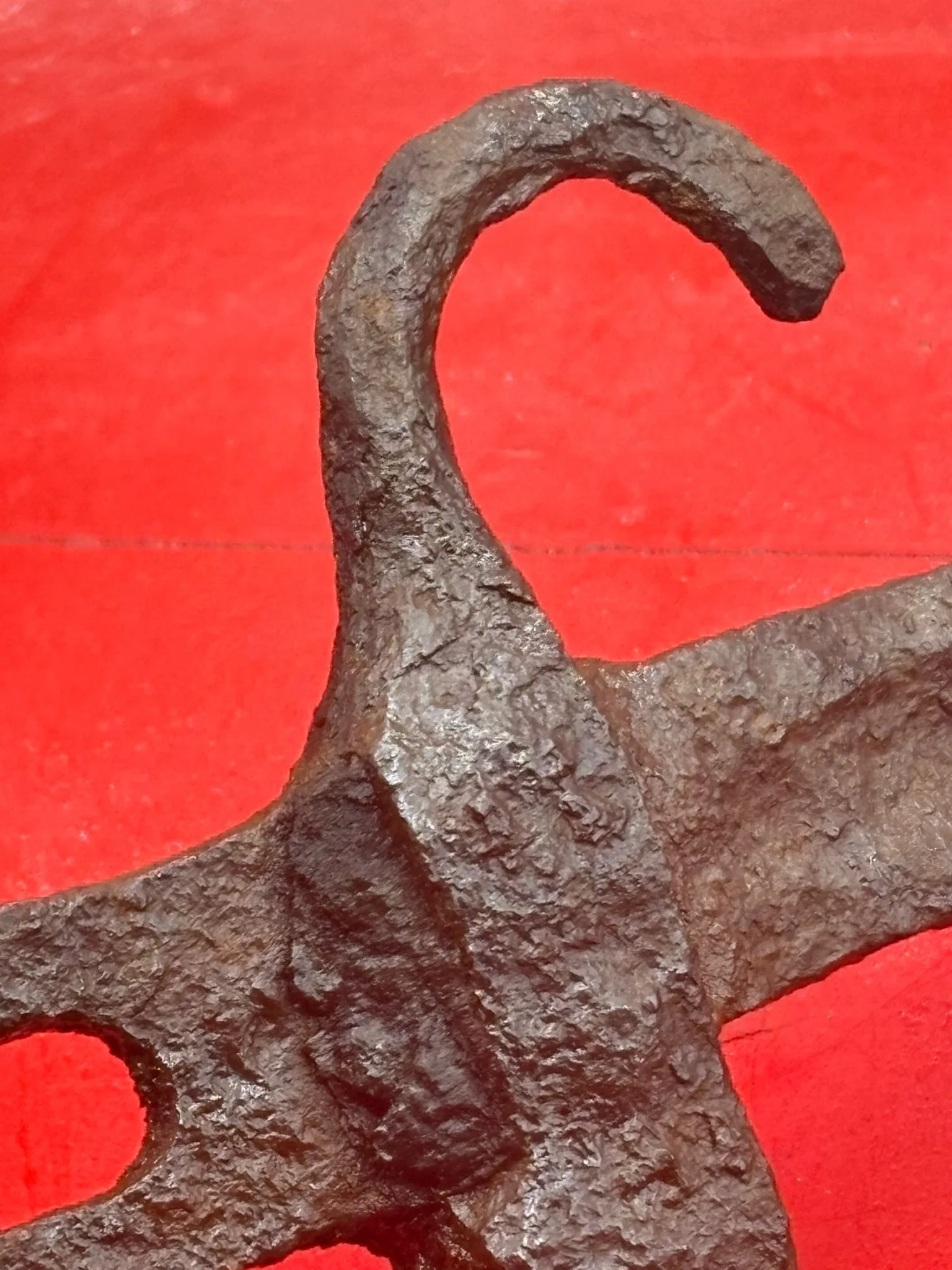 Image 7 of 8
Image 7 of 8

 Image 8 of 8
Image 8 of 8









French Model 1892 Mannlicher Berthier Rifle Bayonet recovered from near River Meuse on Hill 304 and Malancourt area of the March - May 1916 battle which was the large German advance towards Verdun
This is a rare find from the battlefield a pre war French Model 1892 Mannlicher Berthier Rifle Bayonet which is not complete it is missing about half the blade. The bayonet which is relic but not too rusty is still very solid and not breaking up. The blade is pitted and has been very nicely cleaned after its recovery. Perfect for display or any collection it is missing its wooden handle but still a cracking relic as this bayonet was not issued in massive numbers like the lebel was. The bayonet was recovered from from near the River Meuse on Hill 304 and Malancourt the area of the March - May 1916 battle which was the large German advance towards Verdun. A very nice and rare relic from this famous battlefield. The bayonet comes with 2 x A5 laminated information cards with map.
In late February 1916, following German attacks on the right bank of the River Meuse during the Battle of Verdun, the French had established artillery batteries on the hills on the left bank commanding the opposite, right-hand bank. One of these was Le Mort Homme. These batteries caused such havoc that the Germans, belatedly, decided to attack southwards along the left bank of the river simultaneously. Their objective was Le Mort Homme and its neighbouring hills. Over the next few months, the Germans made repeated attacks, pounding the French lines, rushing their positions and ejecting the French from their wrecked trenches. French artillery would then pulverise the Germans and counter-attacks would drive them out again, the French infantry re-occupying the shell holes where the trench systems had been.
Despite the terrible cost, the Germans were able to advance slowly, first capturing a neighbouring hill, Côte 304, which was dominating the approach to Le Mort Homme. Then, on 16 March, the Germans took Côte 265, labelled on their maps as Toter Mann (Le Mort Homme), but not on French maps. Finally, on 24 May, they took the second summit, Côte 295.
This is a rare find from the battlefield a pre war French Model 1892 Mannlicher Berthier Rifle Bayonet which is not complete it is missing about half the blade. The bayonet which is relic but not too rusty is still very solid and not breaking up. The blade is pitted and has been very nicely cleaned after its recovery. Perfect for display or any collection it is missing its wooden handle but still a cracking relic as this bayonet was not issued in massive numbers like the lebel was. The bayonet was recovered from from near the River Meuse on Hill 304 and Malancourt the area of the March - May 1916 battle which was the large German advance towards Verdun. A very nice and rare relic from this famous battlefield. The bayonet comes with 2 x A5 laminated information cards with map.
In late February 1916, following German attacks on the right bank of the River Meuse during the Battle of Verdun, the French had established artillery batteries on the hills on the left bank commanding the opposite, right-hand bank. One of these was Le Mort Homme. These batteries caused such havoc that the Germans, belatedly, decided to attack southwards along the left bank of the river simultaneously. Their objective was Le Mort Homme and its neighbouring hills. Over the next few months, the Germans made repeated attacks, pounding the French lines, rushing their positions and ejecting the French from their wrecked trenches. French artillery would then pulverise the Germans and counter-attacks would drive them out again, the French infantry re-occupying the shell holes where the trench systems had been.
Despite the terrible cost, the Germans were able to advance slowly, first capturing a neighbouring hill, Côte 304, which was dominating the approach to Le Mort Homme. Then, on 16 March, the Germans took Côte 265, labelled on their maps as Toter Mann (Le Mort Homme), but not on French maps. Finally, on 24 May, they took the second summit, Côte 295.
